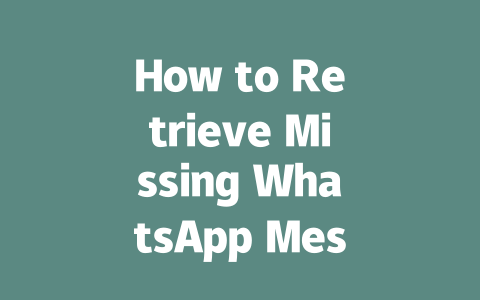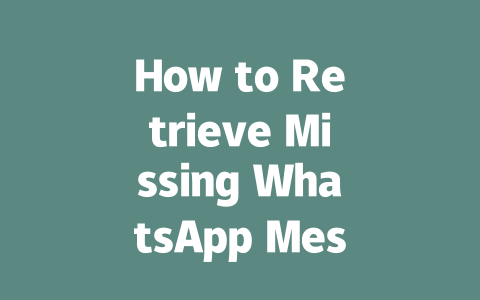You know that feeling when you’re trying to stay up-to-date with the latest news, but it feels like everything is moving at lightning speed? One day a new breakthrough happens in AI, and the next day there’s breaking political news halfway across the globe. I get it—keeping up can be overwhelming. But don’t worry; I’ve got a few tricks up my sleeve that have helped me (and some of my friends) stay informed without drowning in information overload.
Today, I’ll share how to find, filter, and focus on the most relevant and trustworthy news for
Why Staying Informed Matters More Than Ever in 2025
In today’s world, staying updated isn’t just a hobby—it’s essential. Whether you’re an entrepreneur keeping an eye on market trends, a parent wanting to know about global changes affecting your family, or even someone who simply loves learning, having reliable access to the latest news is key. But here’s the catch: not all news sources are created equal.
A couple of years ago, I noticed something interesting while helping a friend set up their daily news routine. They were getting bombarded by clickbait headlines from unreliable websites. Not only was this frustrating, but it also meant they were missing out on high-quality content from reputable outlets. By tweaking their approach, we managed to filter out the noise and focus on what truly mattered. That friend now consistently stays ahead without wasting time on fluff.
So why does this matter? Because understanding current events shapes our decisions, whether personal or professional. And trust me, if you follow these steps, you’ll start seeing patterns and insights that others miss.
What Makes Good News Sources Stand Out?
When I first started diving into the world of news consumption, one question kept popping up: What makes a good source trustworthy? Over time, I learned that credibility comes down to three main things:
For example, last year I came across a piece on renewable energy advancements from The Guardian, a well-known outlet with decades of journalistic integrity. Their article included quotes from industry experts and links to studies, which gave me confidence in its accuracy. Compare that to a random blog post with no citations—it’s easy to see where you should place your trust.
Now let’s talk strategy. Here’s how you can identify and curate the best news for yourself.
Step-by-Step Guide to Curating Your News Diet
Think about the areas you want to stay informed on. Is it technology, politics, health, or business? Narrowing your focus helps you avoid information overload. For instance, if you’re passionate about climate change, you might prioritize updates on environmental policies and scientific research.
Here’s a quick tip: try listing 3–5 topics that interest you most. Then, rank them based on relevance to your life. This will guide you toward selecting appropriate sources later.
Once you’ve identified your interests, seek out top-tier sources for each area. Don’t just rely on Google searches; dig deeper into recommendations from trusted professionals or communities.
To make this easier, here’s a handy table showcasing examples of reliable news sources categorized by topic:
| Topic | Recommended Source | Why It’s Reliable |
|---|---|---|
| Technology | Wired | Award-winning journalism focused on tech innovation. |
| Health | Mayo Clinic | Backed by leading medical experts worldwide. |
| Politics | New York Times | Extensive investigative reporting supported by primary data. |
Notice how each recommendation has a strong reason behind it? That’s crucial when evaluating any source. If something seems sketchy, move on!
One of the easiest ways to stay updated is by setting up alerts for keywords related to your chosen topics. Tools like Google Alerts or Feedly allow you to receive notifications whenever those terms appear in reputable articles.
Let me give you an example. Last month, I set up an alert for “AI ethics” because it’s such a hot topic in
Pro tip: keep your keyword list concise. Too many terms could lead to cluttered notifications. Start small and adjust as needed.
Maximizing Engagement Through Active Reading
Reading isn’t enough—you need to engage actively with the material. This means asking questions, connecting dots between different stories, and applying what you learn to real-life situations.
For instance, I recently read two separate articles: one about advances in electric vehicles and another on sustainable urban planning. When I thought about them together, I realized how intertwined transportation and city design really are. Suddenly, both pieces made more sense and became actionable knowledge.
Try doing the same with your own reading habits. Jot down notes or discuss findings with others. Even sharing highlights on social media forces you to reflect critically on the content.
If you’re wondering whether those messages from 5-12 months ago can magically reappear, the answer isn’t as straightforward as you might hope. It all boils down to your backup habits. If you’ve been diligent about setting up automatic backups to Google Drive or iCloud—whether daily, weekly, or even monthly—you stand a good chance of retrieving older messages. But let’s face it: life gets busy, and not everyone remembers to tweak their settings regularly. If your backups haven’t been consistent or if storage limits have caused data to get overwritten, chances are those older messages are out of reach. That said, there’s always room to improve your routine going forward.
Now, when it comes to restoring messages without relying on backups, things get tricky pretty fast. WhatsApp doesn’t play nice in this department unless you’ve already got a solid backup in place. Some people turn to third-party tools as a last resort, but here’s the catch—they’re often risky business. You could end up compromising your privacy or even jeopardizing your device’s security. In most cases, sticking with official methods is safer and more reliable. Plus, having internet access during the restoration process is non-negotiable. Without it, downloading that crucial backup from Google Drive or iCloud just won’t happen, so make sure your connection is rock-solid before diving in.
# FAQs About Retrieving Missing WhatsApp Messages
# Can I recover messages deleted more than 5-12 months ago?
Yes, but it depends on your backup settings. If you’ve enabled automatic backups to Google Drive or iCloud and the frequency is set to daily or weekly, older messages might still be retrievable. However, if backups aren’t regular or storage limits have overwritten old data, recovery becomes challenging.
# Is it possible to restore messages without a backup?
Unfortunately, no. Without an existing backup in Google Drive or iCloud, restoring deleted messages isn’t feasible directly through WhatsApp. Third-party tools may offer limited solutions, but they often come with risks and aren’t officially supported by WhatsApp.
# Do I need internet access to retrieve missing messages?
Yes, you’ll need internet access to download your backup from Google Drive or iCloud during the restoration process. Ensure a stable connection for seamless message retrieval.
# Can someone else access my backed-up messages?
No, as long as your account remains secure. Backups are encrypted and tied to your Google or Apple ID. However, enabling “Password Protect Backups” adds extra security, preventing unauthorized access even if someone gains physical access to your device or account credentials.
# Will restoring messages overwrite my current chat history?
This depends on how you perform the restoration. Restoring from a backup will replace your current chat history with the saved version up to the date of that backup. Be cautious, as this could erase newer messages not included in the backup unless you back them up first.




